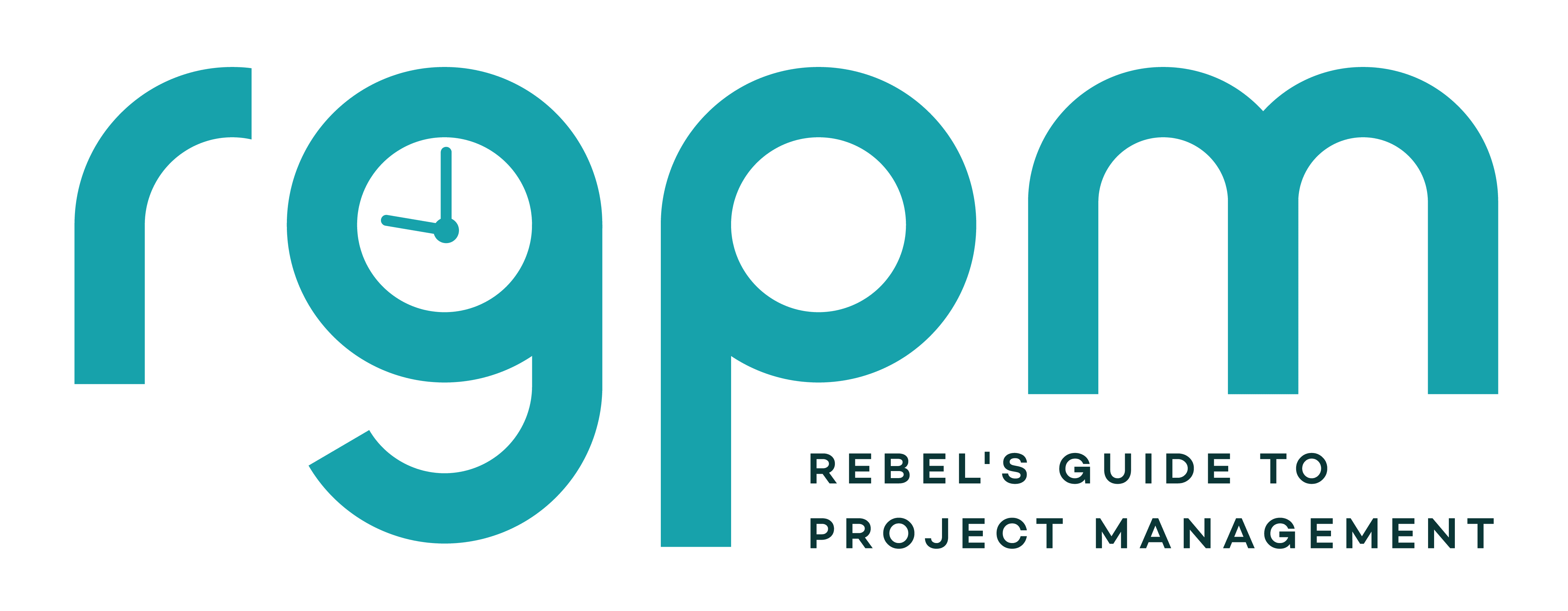The First 30 Days of Your PMO: A Week-by-Week Setup Guide for Small Teams
How to Set up a PMO Series
The first 30 days of your PMO: A week-by-week guide
Your PMO Toolkit: The essentials you actually need to set up a PMO
12-step checklist for setting up a PMO
How to write a PMO mission statement
How to structure and staff your PMO (without a big budget)
Have you been asked to “set up a Project Management Office” but you aren’t really sure where to start? I know the feeling!
I’m going to share with you a step-by-step plan for setting up a PMO. These simple steps are specifically aimed at smaller teams, so if you are a project manager who has been asked to stand up a PMO function, or an operational leader, a program manager, or anyone else who now has responsibility for tracking projects across the function or organization, this is for you.
For the bigger picture view, check out our 12-step PMO set up checklist which goes through the core components of building a PMO.
Your 30 day plan
Let’s not kid ourselves: setting up a PMO takes time and commitment. I’ve laid out the steps to do in the first 30 days so you can get started, but it could take longer if you need to overcome some office politics.
The overall process for a lightweight project management office is:
- Understand the landscape and draft a plan
- Define the PMO Charter and start engagement
- Build core processes and tools
- Pilot, refine and communicate.
The actual time it takes is going to depend on your team set up, the commitment from your senior management and leadership team and how much time you’ve got to dedicate to your PMO creation.
A note on methodologies
I was contacted recently by a reader who wanted to know what was the best methodology for her team.
There is no ‘right’ answer to this, especially if you are setting up a PMO in a small business.
Project management methodologies are the ‘how’ you do your projects and in my experience they are mostly in-house. Even if you start out with a tailorable method like PRINCE2, the way it’s adapted and implemented in-house makes it into ‘your’ methodology.
I don’t think it really matters, as long as project execution is happening, relevant stakeholders are engaged, project status is reported and there is a degree of control with adequate governance.
Yes, you can adapt a published methodology. You can train your team in a particular approach, but you still have to allow individuals a degree of freedom for delivery, especially for complex projects where you don’t want your governance to become a box ticking exercise.
Aim to set project management standards, provide some project checklists of expected good practice and you’ll be a long way towards helping project managers deliver effectively.
Week 1: Understand the landscape and draft a plan
Goal this week: Understand the business context, identify pain points, and sketch the PMO’s purpose.
What to do this week
- Meet key stakeholders: Talk to exec sponsors, department heads, project managers.
- Audit existing projects: Get a list of current and recent projects
- Identify pain points: What’s going wrong? Missed deadlines, no visibility, no strategic alignment, resource clashes?
- Sketch the initial PMO model: Supportive, controlling, directive? What model do you want to be? (This will be based on org maturity.)
- Start a PMO Setup Plan: Define your goals for the first 90 days.
- Set stakeholder expectations: Clarify what the PMO will and won’t do.
What you’re trying to achieve this week is to work out where to start from. The pain points will help you assess where standard governance or templates would create some quick wins.
In my experience, that’s often project onboarding and/or project closure. For example, in one organization I know, execs said yes to every project and then wondered why teams were drowning in work and not completing anything… Hmm, I wonder why?!
Fixing the onboarding and project requests process meant decisions were made with more information and with better prioritization, so teams could manage the flow of incoming work more effectively.
If that rings a bell with you, perhaps looking at project approvals and initiation, and project portfolio governance, is a good place to start for your teams too.

Assets to create at this point
- Stakeholder analysis, stakeholder map and stakeholder engagement plan
- Issues/pain points log
- PMO vision draft
- PMO implementation plan (so you know where you’re going!)
These don’t have to be final versions. You can evolve these documents as you go, but at least now you have as starting point.
The vision information is likely to come from the person who asked you to set up the PMO. They’ll have an idea about what they want to achieve.
It could be transparency across all projects, better reporting, oversight, resource management, an approach to dealing with project issues, mentoring and support for project managers, applying standard methodologies or something else. Talk to your manager or key exec leader and find out what they think the PMO is going to do for them.
Week 2: Define the PMO Charter and start engagement
Goal this week: Get alignment and buy-in for the PMO’s mission, scope, and authority.
What to do this week
- Write a lightweight PMO Charter
- Purpose
- Objectives
- Services offered (e.g. reporting, templates, coaching)
- Governance model
- Present your draft to stakeholders: Collect feedback and iterate
- Start brand building: Pick a name, define tone/ethos (e.g. “Project Support Office” vs “Portfolio Office”)
- Agree reporting lines: Who owns the PMO and who supports it?
This week, you’re working to review what you’ve learned so far with the senior managers who will have to support the work of the PMO.
Talk to key stakeholders about how they feel about the mission and scope of the PMO. Get agreement on where the PMO sits, who owns it, how it’s going to fit within the structure of the organization and what project teams can expect from it.
You may or may not want to include project managers at this point. If I think about the project managers I’ve mentored in this situation, often they are the only project professional in the organization, so you might not have anyone else to include!
Assets to create at this point
- Final PMO Charter
- PMO name and positioning doc (read my guide on how to create a mission statement for the PMO)
- Org chart with PMO placement
These documents are going to help set you up for success by getting everyone on the same page. They are the communications assets you can use to share the goal and vision, and you’ll be using them time and time again so make sure they look good!
Remember, you can add in more services to your PMO later. You might not be in a position to manage resource requirements or report on resource utilization right now but that might come later.
Week 3: Build core processes and tools
Goal this week: Equip the PMO to start operating.
What to do this week
- Create essential templates for project teams to use:
- Project brief or charter
- Project reporting dashboard
- RAID log template
- Any other project management templates you feel you need at this point
- Define process flows:
- Project lifecycle (initiation to closure)
- Reporting cycle (weekly/biweekly)
- Choose your project management software:
- Start simple:
Google Workspace, MS Planner, Asana, Notion, Trello, or Excel - Or use entry-level PM tools like ClickUp, Monday.com or Smartsheet
- Start simple:
- Decide how to store/share documents: Cloud folder structure, naming conventions
This is a big week, because having gained approval to progress with the PMO as you’ve laid it out, now you’re making it real.
For project management processes, think about the pain points again. What do you need to have in place to hit those strategic goals? You won’t need them all in place from the very beginning.
The essential templates should be the ones that will help you address the pain points you are going after first. You don’t have to create the whole suite of templates. And you don’t have to create them at all, you can just get them from me and pass them off as your own (that’s what they are there for!).
In terms of PMO software for smaller teams, I would recommend starting out with the tools you have available to you, so that might be spreadsheets and collaboration tools. You can add in enterprise-grade project management software later, once you’re confident the PMO is going to stay the distance.
Get fast & free advice from the experts at Crozdesk.com. Crozdesk's small team of dedicated Project Management software enthusiasts will compare 360+ products for you. Tell them your requirements and they'll match you with the right expert who can help.
- No Obligations
- Free Service
- Exclusive Discounts
- Expert Advice
- Minimal Time Commitment
- Get a Custom Comparison Report
Assets to create at this point
- PMO Starter Toolkit of templates you can offer to projects/project managers
- Folder structure template for document filing
- Basic project governance framework
- Portfolio list of all in-flight, active projects
The assets you create at this point will be specific to the type of PMO you are.
Most ‘early stage’ PMOs exist to get a bit of standardization into the way projects are run, so project management templates might be the way to go. Remember, you don’t have to create them all from scratch. Look at successful projects and adapt the templates and processes they used. There is best practice in your organization already!
If you’re starting your PMO to bring transparency to the portfolio and show what change is happening across the department or organization, the portfolio project list and a standard report template is going to be more important.
You might want to focus in on project success rates and report on resource allocation across the portfolio, for example, so you’ll need documentation to support that.
Pick and choose so you get closer to the goals you set in Week 1.
Week 4: Pilot, refine, and communicate
Goal this week: Test the setup on a live project, refine, and socialise the PMO.
What to do this week
- Pick a project to pilot your PMO framework
- Apply your templates, governance, and status reporting
- Collect feedback from project teams
- Refine processes: Tweak based on what’s working/not
- Promote the PMO internally:
- Share a newsletter, Slack post, or short presentation
- Offer a “drop-in clinic” or onboarding session
Now you have an objective for the PMO and some tools for how you are going to do that. It’s time to apply your new governance, templates, methods and guidance to a project to see how they are going to work out.
Your pilot project could be one in-flight, or (if your pain point is project intake) the next new project that comes along.
Start small and work with one (preferably enthusiastic and open) project team. In a small team, this could be a project you yourself are running. See how it goes and what you would want to change.
Keep a log of improvements and process changes as you probably won’t be able to implement everything at the same time. Then you can work down the list and prioritize the enhancements that would make the most difference.
Assets to create at this point
- Pilot project case study to show the benefits of a standard approach
- Final PMO playbook/document library (although you will iterate and add stuff, that’s fine)
- PMO launch announcement/email and any other internal communications for project teams that are useful
- Senior leadership reporting or executive project dashboard.
Use these assets to share what you are doing with colleagues. My suggestion at this point is to manage expectations down and then over-deliver! Don’t set yourself up for failure by promising too much too early.
Next step: Evolve and expand
The first month is important, but it’s literally only the first month. You’re going to have to do a lot more work over the weeks and months to come, both to review what you have achieved this month but also to bring in new functionality, update and continue to embed good project management best practice.
Starting a PMO as a solo project manager is daunting, but you can do it!
The PMO will evolve as project management maturity across the team, department and organization evolves. Individual projects will make use of the services offered by the PMO and provide feedback, and that will help you decide where to evolve what you do.

